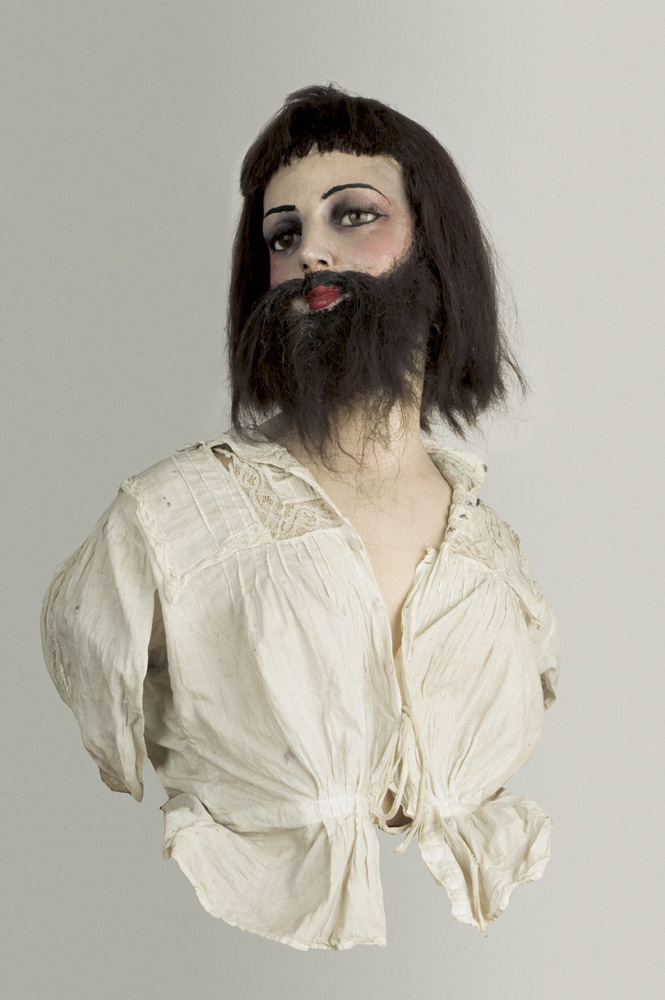



[the] exhibition "Exquisite Bodies: or the Curious and Grotesque History of the Anatomical Model" is inspired by the craze for anatomy museums during the 19th century, when displays of wax models conveyed information about the human body to wider audiences than ever before. ‘Exquisite Bodies’ includes a superb variety of historic anatomical waxes, from the academic to the fantastical, examining how they circulated in contexts as disparate as the laboratory and the fairground. --Kate Forde, Curator, the Wellcome CollectionThe Wellcome Collection--by far my favorite contemporary medical museum--is launching an incredibly exciting new exhibition, which I have had the honor and delight of participating in as curatorial adviser and graphic designer. Thus the long gap in my blog posting, for which I apologize.
Entitled "Exquisite Bodies: or the Curious and Grotesque History of the Anatomical Model" and running from July 30 to October 18 2009, this exhibition takes as subject the under-appreciated and rarely glossed history of the popular anatomical display (see recent MA posts here, here, here, here and here). Popular anatomical displays were a kind of popular, spectacular, democratized version of scholarly or professional medical museums. Often exhibiting objects intended for (or perhaps even once presented in) an academic context, these displays--which were extremely popular in the 19th Century and could be widely found at fairgrounds and in "popular anatomical museums" until the beginning of the 20th Century-blended education and entertainment, public health and spectacle, scholarship and prurience for a mass audience.
The centerpiece of these displays was usually the Anatomical Venus--a beautiful, life-like woman, generally made of wax, often life-sized, and demonstrating--upon the delicate removal of her breastplate--the mysteries of the inner female body (see 5th image down; more on this concept here and here). This central Venus was generally supplemented by waxes and other sorts of models, wet preparations, and illustrations parsing topics such as the ideal and compromised female body, the ravages of sexually transmitted diseases, the aberrant body (ie. freaks; see bearded lady, 2nd image), the mysteries of generation, and the ill effects of spermatorhea (aka "abnormally frequent emission of the semen without copulation", seen as a real public health issue at the time).
The exhibition will bring together an amazing collection of models--many of them breathtakingly exquisite waxes--and ephemera never seen together under one roof. Objects have been drawn from--in the proud tradition of the popular anatomical displays to which this exhibition pays tribute--both academic and popular collections. Objects from The Gordon Museum of London, The Museum Dr Guislain of Ghent, Musée de la Médicine in Brussels, the University of Cambridge, the London Science Museum, and the Wellcome Library will be featured.
Here's more about the exhibition and the phenomenon of popular medical displays, from the Wellcome Collection press release:
In the 19th century, despite the best efforts of body snatchers, the demand from medical schools for fresh cadavers far outstripped the supply. One solution to this gruesome problem came in the form of lifelike wax models. These models often took the form of alluring female figures that could be stripped and split into different sections. Other models were more macabre, showing the body ravaged by 'social diseases' such as venereal disease, tuberculosis and alcohol and drug addiction.This show promises to be truly marvelous in every sense of the word. If you find yourself in London between July 30th and October 18th, be sure to check it out! And drop me a line and let me know what you think!
With their capacity to titillate as well as educate, anatomical models became sought-after curiosities; displayed not only in dissecting rooms but also in sideshows and the curiosity cabinets of wealthy Victorian gentlemen. For a small admission fee, visitors seeking an unusual afternoon's entertainment could visit displays of these strange dolls in London, Paris, Brussels and Barcelona.
To find out more about the exhibition, click here. To visit the Wellcome image gallery related to the exhibition (from where many of the above images are drawn), click here. To play with the Wellcome interactive Anatomical Venus (!!!), click here.
All of the above images are of objects that will be included in the exhibition. Captions, top to bottom:
1) Head exhibiting syphilis, c.1900, Collection Family Coolen, Antwerp/Museum Dr Guislain, Ghent, Belgium
2) Bearded lady, Undated (c. 1900), Collection Family Coolen, Antwerp/Museum Dr Guislain, Ghent, Belgium
3) Extraction of the placenta: Plaster relief from a series illustrating the stages of childbirth, Undated (c.1900) Collection Family Coolen, Antwerp/Museum Dr Guislain, Ghent, Belgium
4) Anatomical female figure, Germany, undated (1600-1800), Ivory, The Science Museum, London
5) Wax Venus - anatomical figure made in Florence, 1771-1800, Courtesy of the Science Museum, London
6) Poster from the Roca collection. Collection Family Coolen, Antwerp/Museum Dr Guislain, Ghent, Belgium


4 comments:
ooh excellent, might pop along if we are in London.
brilliant.Joanna you constantly amaze and terrify me at the same time. I love your writing and the distinct style of your descriptions of every beautiful object you find.
Joanna,
Congrats on being invited to help curate this exhibition!
I am quite frustrated, as I was just at UCL a few weeks ago, and would have given anything to see this exhibition. In any case, kudos.
www.medhumanities.org
Hi,
Today in Barcelona (Spain): “Una història evanescent vs el retorn del Museu Roca: Un espectacle d’anatomia humana a la Barcelona del primer terç del s. XX”, by Dr. Alfons Zarzoso. 19:00 h. Sala Nicolau d’Olwer de l’Institut d’Estudis Catalans, carrer del Carme 47.
http://enarchenhologos.blogspot.com.es/2013/02/el-redescobriment-del-museu-roca-de.html
http://enarchenhologos.blogspot.com.es/2013/01/museu-roca-lespectacle-de-la-sifilis-i_17.html
Thanks!
Enric H. March
Post a Comment